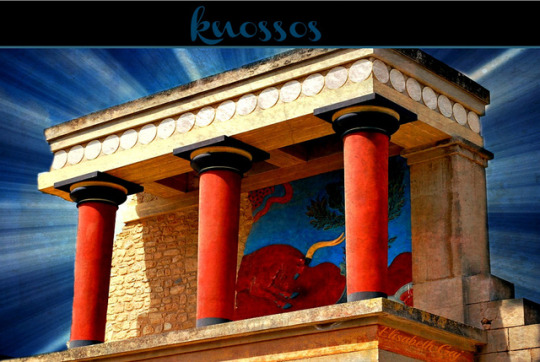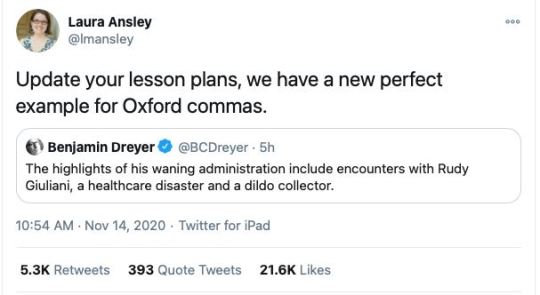Text
If you ever feel down just think about how happy a future archeologist will be to find your bones. They will love your bones so much. They will scream in happiness and do a little dance when they see your bones. Your bones will be so meaningful to them.
2K notes
·
View notes
Note
What is your favourite small, painfully human gesture?

and also if we can just:

106K notes
·
View notes
Photo

KNOSSOS 2013 37. by elita53 Knossos (alternative spellings Knossus, Cnossus, Greek Κνωσός, pronounced [knoˈsos]) is the largest Bronze Age archaeological site on Crete and considered as Europe’s oldest city.
The name Knossos survives from ancient Greek references to the major city of Crete. The identification of Knossos with the Bronze Age site is supported by tradition and by the Roman coins that were scattered over the fields surrounding the pre-excavation site, then a large mound named Kephala Hill, elevation 85 m (279 ft) from current sea level. Many of them were inscribed with Knosion or Knos on the obverse and an image of a Minotaur or Labyrinth on the reverse, both symbols deriving from the myth of King Minos, supposed to have reigned from Knossos.[5] The coins came from the Roman settlement of Colonia Julia Nobilis Cnossus, a Roman colony placed just to the north of, and politically including, Kephala. The Romans believed they had colonized Knossos.[6] After excavation, the discovery of the Linear B tablets, and the decipherment of Linear B by Michael Ventris, the identification was confirmed by the reference to an administrative center, ko-no-so, Mycenaean Greek Knosos, undoubtedly the palace complex. The palace was built over a Neolithic town. During the Bronze Age, the town surrounded the hill on which the palace was built.
The palace was excavated and partially restored under the direction of Arthur Evans in the earliest years of the 20th century. Its size far exceeded his original expectations, as did the discovery of two ancient scripts, which he termed Linear A and Linear B, to distinguish their writing from the pictographs also present. From the layering of the palace Evans developed de novo an archaeological concept of the civilization that used it, which he called Minoan, following the pre-existing custom of labelling all objects from the location Minoan.
The palace of Knossos was undoubtedly the ceremonial and political centre of the Minoan civilization and culture. It appears as a maze of workrooms, living spaces, and storerooms close to a central square. An approximate graphic view of some aspects of Cretan life in the Bronze Age is provided by restorations of the palace’s indoor and outdoor murals, as it is also by the decorative motifs of the pottery and the insignia on the seals and sealings.
The palace was abandoned at some unknown time at the end of the Late Bronze Age, ca. 1380–1100 BC. The occasion is not known for certain, but one of the many disasters that befell the palace is generally put forward. The abandoning population were probably Mycenaean Greeks, who had earlier occupied the city-state, and were using Linear B as its administrative script, as opposed to Linear A, the previous administrative script. The hill was never again a settlement or civic site, although squatters may have used it for a time.
Except for periods of abandonment, other cities were founded in the immediate vicinity, such as the Roman colony, and a Hellenistic Greek precedent. The population shifted to the new town of Chandax (modern Heraklion) during the 9th century AD. By the 13th century, it was called Makruteikhos ‘Long Wall’; the bishops of Gortyn continued to call themselves Bishops of Knossos until the 19th century.Today, the name is used only for the archaeological site now situated in the expanding suburbs of Heraklion.
https://flic.kr/p/eLTh6Q
1 note
·
View note
Photo

Neolithic pottery face found in Poland The remains of a ceramic vessel with a human face and horns have been discovered at a Neolithic site in the village of Biskupice near Wieliczka, southern Poland. It was unearthed inside a dwelling in a settlement of the Linear Pottery culture that dates back 7,000 years.
6 notes
·
View notes
Text
Humans gotta human
im having feelings about the uffington white horse again
226K notes
·
View notes
Text
youtube
2 notes
·
View notes
Text
You know what’s the problem with Karolingians?
They all have the same freaking five names.
300 years and they’re all called Karl, Karlmann, Pippin, Ludwig, Lothar.
0 notes
Text
Today I learned : Tiberius Gracchus
Nuff said.
0 notes
Text
Barbarians or
if the others write your fanfiction....
Barbarians is a new show on Netflix, detailing the events of the Battle of the Teutoburg Forest. As they imagine it.
Now, the first question everybody asks you as historian: Is it any good?
It’s not “bad”.
The Romans are really well done. Good historical advisors, too. Latin! (if that’s your thing)
The story is... as stories are... twisted to fit the modern expectation for narration and conflict, not exactly historically accurate. (as a writer, I think the original would have been enough, but hey, Netflix you do you)
Now...those Germanic tribes.
a) that priestess/shaman dress is from the mesolithic (European medium stone age, 9000 years ago, not 2000). Just saying mates.
b) The Romans look cool, yes. But they should have used some of the money they used on their customes on giving the Germans more than one measly village. Both Segimer (Arminius father) and Segestes (Thusnelda’s father) were tribal chiefs of the Cherusci. They ruled over several villages within the area of the Cherusci.
Also: “Reik” is pure invention. It would have been fine to call them “Fürst” in German. It has an old germanic equivalent in furisto, which literally means “First”
c) Germanic tribes had a complex relationship with Romans. Germanic chieftains traded with the Romans, they ate from Roman tableware and wore jewelery of Roman provinience. They did not sit around bonfires, planning attacks on the world’s largest army like a group of weekend LARPers.
All in all the Germans’ depiction feels a little like a Roman fanfiction of the battle. The Romans are painted in perfectly drawn detail, they are given their own language, their own complex motivations and are put front and center. Arminius, in that regard is treated as a Roman.
Whereas the Cherusci are reduced to background characters. They are there to fight, but their rich and complex society is largely ignored. The complicated political climate is largely ignored, because it would give the Cherusci a certain historical agency that is not intended by the show.
They are, low and behold, barbarians and used and treated as such by the show.
Much in accordance with the Roman idea of barbarians and their justification on why they deserve to be conquered and civilized.
That aside, the depiction of the battle itself is also not corrrect. It lasted three days, with an opening volley of numerous needle attacks on the marching army’s retinue, slowing them down, slowly eroding their maneuverability by burdening them with an increasing number of wounded and depleating ressources.
I wish they would have put some more emphasis on they way Arminius literally abused all the weaknesses of the Roman army to beat them at their own game.
Is it an entertaining show? Yes
Can you watch it when you want to see cool Romans in cool (and authentic) Roman clothes? Yes
Can you watch it when you want some Romans to be butchered? Hell yes
Is it historically accurate, even with the few sources we have about Arminius, all of which are Roman?
Nope.
Enjoy the show, oogle some Romans if that’s your thing, don’t use it to answer test questions in your history class
6 notes
·
View notes
